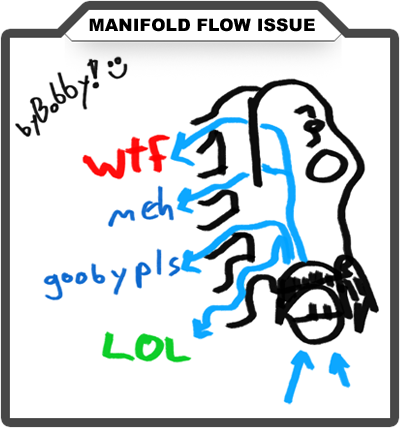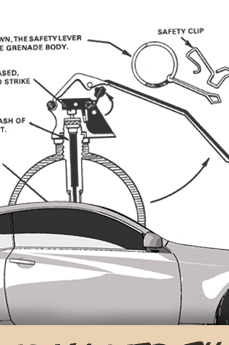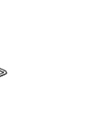| |
|
To this day, the debate rages on in every Facebook group and internet forum - fueled by ignorant n00bs and trolls, new ones arrive every hour: Cold air intake vs. Short Ram! Sunday! Sunday! Sunday! You paid for the whole seat, but you'll only need THE EDGE!
The science behind improving the air intake of your turbocharged or naturally aspirated engine revolves around two things - cool air, and lower restriction. Those two should be very self explanatory so I will lecture no further. Bear in mind your car comes equipped with a stock snorkel - this is the black plastic thing that sits on top of your radiator. It brings outside air into your engine bay directly to your OEM air filter or your short ram intake's filter. Never remove this snorkel.
You have two choices; cold air intake, or short ram intake. You will encounter toolbags who will actually argue till they are blue in the face that a cold air intake is somehow detrimental to a turbocharged car, and is not a suitable choice. They are wrong. Cooler air is better air.
The only potential downside a cold air intake offers is that a longer pipe run between the filter element and the turbo inlet means a slight decrease in response given the distance the air must travel to reach the inlet once it is pulled in through the filter. Keyword here is slight. On the flipside, bear in mind that because the air (referred to now as an intake "charge") is now coming up a pipe and into a turbocharger compressor housing and getting squeezed against a spinning wheel, it will get warmed up quite a bit, because turbochargers get hot. The charge air then passes through the intercooler to cool down before it gets into your throttle. Some will argue that the cold air intake's benefits are counteracted by the hot compressor; statistically it may be negligible but the fact remains that colder air is better air.
Therefore whether you run a cold air intake pulling exterior air in at the filter, or you run a short ram intake that accepts outside air from the OEM snorkel, you are well equipped to see a 7-18whp gain depending on the type of intake you buy and where you operate. Ambient air temperature in your neighborhood is a big factor in your turbo car's performance, because the Turbo Fairy is a fickle bitch; temperature is one thing she doesn't respond well to. We'll get to her later. To illustrate these points, our resident artist on loan from the local elementary school will sketch these two types of intakes out as they are generally understood in practical use to weigh their benefits!
Available Intake CAI/SRI Products -
Vendors - Reseller Directory
Because literally every big brand and a whole bunch of not so big brands offer intakes for your car in just about every flavor, there's no way to list every one. Simply shop from the reseller of your choice, buy the one you like, install it, and be happy. This component of the car is so simple in nature it's incredibly difficult to screw up, so no one brand is going to do you any harm vs. another. Just buy one you like, and please, never post a CAI vs. SRI thread on a forum, ever.
Intake Manifold Upgrades/Porting & Polishing
Before you get too excited, there is only one known good generally available aftermarket replacement manifold - it is fabbed/made by Evolution Autodesign out of New York. These guys fabbed their manifold and tested fitment on both generations of cars; the part is known to fit/function properly and EAD dyno'd their car out to just shy of 600whp, so rest assured it's a feasible solution - especially at their very reasonable ~$1000 asking price.
There was once a tubular "log" manifold available from a company called Elite Motorsports or somesuch out in the midwest, but due to the fact that you people are too Jewish to fork out the dough typically paid for this type of part (~$1200+) that product disappeared after a handful of people got ahold of one. Another Problem for vendors wishing to develop and sell this product is the fact that the runner (the tube that splits off from the big fat thing the air goes into, called the surge tank) which feeds Cylinder 1 (closest to you facing the front of the car) has to basically flip a bitch on the way from the throttle to the cylinder head.
This is bad. This means that (generally speaking ) if you build a proper intake manifold surge tank and move the throttle forward a bit, you now have to build a whole new charge pipe coming up to the throttle, and brother that is a fun task because your radiator overflow tank is sitting right there - and if you have a Mishimoto or Koyo racing radiator, you're even more squarely fucked for space right there. NOTE: Some folks have simply trimmed/cut existing pipe kits with the Elite manifold and found it to fit well after modification.
Hence, if you'd like to turn up the boost and run a larger turbo, you're hosed unless you REALLY PROPERLY port out the OEM manifold or replace it entirely. Because the OEM intake manifold was designed by a complete idiot, cylinder one gets fed a whole bunch of fuel and not much air. Cylinders two and three are pretty indifferent to much of life, while cylinder four gets blasted out of bed by a fire hose. And by fire hose I mean dangerously lean, hot air with not much fuel. At stock power levels with a stock turbo the intake manifold is fine. Here again is our local talent to describe the issue for you -

The only methods to reducing the effects of/alleviating this problem, which gets worse the more you go above stock boost levels - are as follows.
1. Port & Polish the OEM intake manifold. This will cut the problem roughly in half, depending on who you ask; any improvement is a good thing, but its not a full solution.
2. Have your aftermarket (Deatschwerks/RC/Bosch) larger-than-stock fuel injectors flow-tested, find which one flows the most fuel, stick it on the port for cylinder 4. This is kind of a 'meh' solution and is alot like emptying an automatic weapon into a daycare center on a Sunday afternoon; you may hit nothing and be totally cool, or somebody might have been napping in there and you're completely fucked.
3. Haltech Standalone ECU allows tuning individual fuel injector duty cycles; e.g., you could set #4 to run rich vs. the other three and keep an eye on the sparkplug for cylinder four as you tune to determine whether you are running it too rich, find a sweet spot, be happy. This is only an option if your injectors have a butt ton of duty cycle available to you; for example if you are trying to tune a GT3071 turbo at 30lbs of boost (which is alot) and you've selected 750cc injectors, you're going to probably be at 85-90% fuel injector duty cycle just to get the thing running healthily, much less write a hot tune. It is never a good idea to run a fuel injector or fuel pump at 100% duty cycle for reasons you should be able to gather if you have more than one functioning brain cell. Therefore if you expect to use an OEM intake manifold and you're going for the moon in terms of boost, use big ass injectors so you have wiggle room to run duty cycle up and down and achieve cylinder-by-cylinder happiness with individually calibrated injectors.
Available Port & Polish Services -
Grimmspeed Port & Polish Intake Manifold, Throttle Body - MSRP $89-199
Grimmspeed is a well-respected name in the Subaru, Mitsubishi and Mazda world, and they've proven to be a good value in PnP services for both motors of the Genesis.
They also ofer custom color ceramic coating of the IM, though this is a cool-factor upgrade only, it does not offer a performance benefit of any kind, no matter what anyone may try to tell you. Porting and polishing your throttle body isn't going to change the world for your car's performance but it's one of those things that's cheap enough and it's only going to help airflow, so why the hell not.
Verdict: Best value port & polish service with known good customer service. Excellent price, can't lose.
MAPerformance Port & Polish Intake Manifold - MSRP $649.99
- Runners are both Port & Gasket matched (Ed. - Matos, C.)
- Manifold overall volume increased by ~0.3L (Ed. - Matos, C.)
Modern Automotive Performance is a known name in the business, and they've been around the block more than once; thus you should not balk at the price. Whether their port & polish job is better in results than the competition is up to you and a dyno chart. That being said, in this business, you almost always get what you pay for, so bear that in mind. These guys offer airflow data before and after with a 51CFM overall gain and all four runners balanced about as perfectly as you can get with this googly piece of aluminum Hyundai cooked up to sell with the car.
Verdict: Full-race build? Deep pockets? Got-to-be the baller? This is the best overall option, money being no object. |
|
|
 |

































